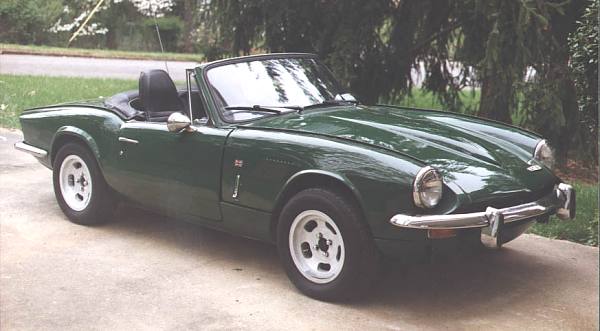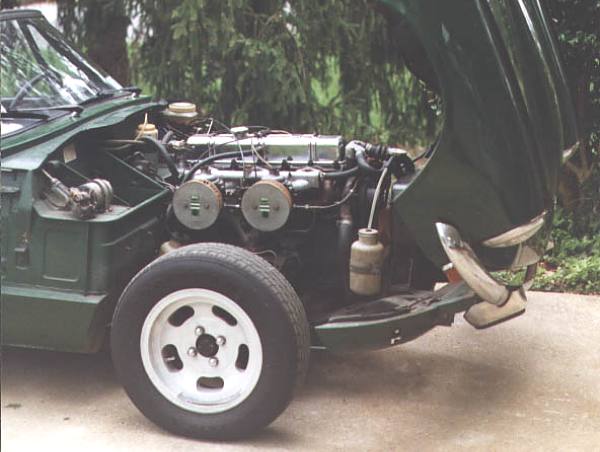
Chris Oliver's 1970 GT6+ Roadster
(as recorded by Dan Masters)Just your average, immaculate, Spitfire, right? Sorry, this is a wolf in sheep's clothing. Under that beautiful Spitfire skin beats the heart and soul of a GT6!

This is my 1970 GT6+ Roadster. I can't take credit for building this car - that goes to Rob Stuart. I have owned this car since 1997, when I bought it from Rob. The car started life as a 1970 GT6+. In about 1985 the GT6 was at the end of its life, and that is when the transformation took place over the next couple of years.
As you can see from the pictures, it is possible to fit a late model Spitfire body on an early chassis, and the early style front end doesn't look too bad. The car also has the GT6+ doors and wing vents. These are a nice feature because they help to reduce the wind buffeting at speed, and can also be used to help direct air into the cockpit. The only downside is that I will have to modify my tonneau cover to fit.


The car is running the rotoflex rear end. To mate this to the car, shock mounts were welded to the inner fender wells, and the inboard mounts for the radius arms were opened up and reinforced.
The brakes are stock GT6+, and the body has a recess in the firewall to accept the dual-line brake master cylinder. This may be a problem if you swap on a body with a single-line system, as the recess is not there.
If you are thinking about doing this swap, it is pretty straightforward. The
only body modification is a small modification to the firewall to clear the
starter. There would be no modifications to the rear if you go with a non-rotoflex
rear, but if you do, there are now kits available that locate the shock mounts
on the frame. This would do away with the need to weld on shock mounts.
I have also heard that the emergency brake cable guides need to be changed
from the GT6 tube to the Spit tub. I would also add that the easiest way
to do this would be to swap the Spit body onto the GT6 frame. Also, if you
tried to match body types to bonnet types, it would hide the fact that you
have a bigger engine under the hood.
My car drives very well. The steering is a little heavy at slow speeds, but I believe that it is caused by the choice of tires and width of them. The overdrive is great, and the car keeps up with traffic on the interstate while only turning over at 3000 RPM. The car rides no harder than you would expect a Spitfire to. Right now, I am running modified KYB gas shocks on the back (from British Parts Northwest). These are real stiff, and they supply them for the GT6. I have Koni's on the front, but they will soon be replaced with KYB's. The car has stock springs and front and rear sway bars.
The pictures I have included are of the GT6 at the end of its life. You can see the Spit tub behind it , and the bonnets leaning up against the fence. The other views show it from the front, which I don't think looks too bad, and the engine. I have also included a shot of the dash. It is GT6, but instead of using the eye ball vents, I have a TR6 oil pressure gauge and a voltmeter.
My car drives very well. The steering is a little heavy at slow speeds, but I believe that it is caused by the choice of tires and width of them. The overdrive is great, and the car keeps up with traffic on the interstate while only turning over at 3000 RPM. The car rides no harder than you would expect a Spitfire to. Right now, I am running modified KYB gas shocks on the back (from British Parts Northwest). These are real stiff, and they supply them for the GT6. I have Koni's on the front, but they will soon be replaced with KYB's. The car has stock springs and front and rear sway bars.
The pictures I have included are of the GT6 at the end of its life. You can see the Spit tub behind it , and the bonnets leaning up against the fence. The other views show it from the front, which I don't think looks too bad, and the engine. I have also included a shot of the dash. It is GT6, but instead of using the eye ball vents, I have a TR6 oil pressure gauge and a voltmeter.

